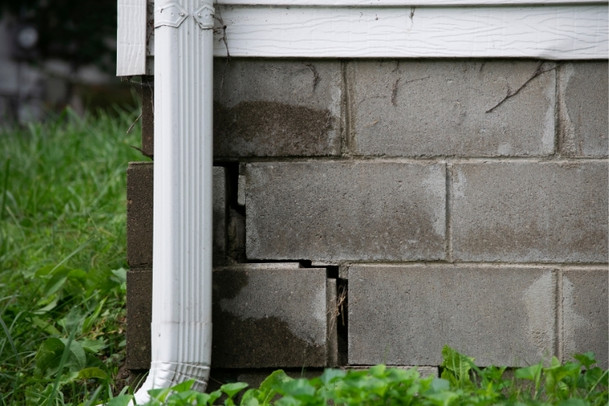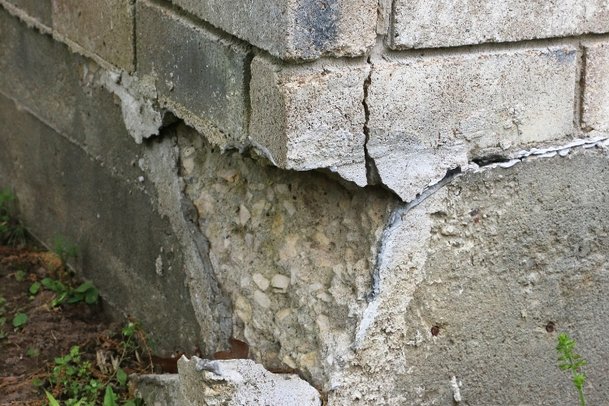
Written by Kayla Jane Barrie Updated on Mar 21, 2025 5 mins read

A strong foundation is essential for the stability and safety of your home. But what happens if it gets damaged?
Foundation issues can be expensive to repair, and homeowners often wonder whether their home insurance policies will help cover these costs. Understanding how insurance applies to foundation damage can help you avoid unexpected financial stress.
In this blog, we'll explore the types of foundation damage typically covered by insurance, the common causes of foundation problems, and what steps to take if you discover damage. Whether you're a homeowner looking to protect your investment, file a claim, or consider a new policy, this post will assist you.
Several things can damage the foundation of a home, and understanding them is crucial for homeowners to protect their property. Here are some common threats to a home's foundation:
Whether foundation cracks are covered by home insurance depends on the cause of the damage. Most standard policies cover sudden and accidental damage from perils like fire or explosions to your property.
Foundation cracks resulting from gradual issues like settling, poor construction, soil movement, or lack of maintenance are typically excluded.
If the cracks are caused by a covered peril, such as an earthquake or severe storm, and you have the appropriate endorsements, there may be coverage. Reviewing your policy and discussing specific coverage options with your insurance provider is crucial.
An example of when insurance would cover foundation repairs is if a sudden issue, like a burst pipe, causes significant water damage to the foundation. In this scenario, the water damage is considered sudden and accidental. If the burst pipe leads to cracks or the foundation shifts, the company may help cover the necessary repairs.
It’s important to note that coverage could be denied if the pipe bursts due to poor maintenance or neglect. Always check your policy details or consult your insurer to understand your coverage, and if you are looking at buying a new home, consider a home inspection to catch any potential risks.
An example of when your policy would not cover foundation repairs is if the damage results from soil movement due to poor drainage or natural settling over time.
If water consistently pools near your home's foundation because of improper landscaping or clogged gutters, causing the soil to erode or expand, resulting in foundation cracks, this would generally be considered a maintenance issue.
Since standard policies typically exclude coverage for gradual damage, neglect, or construction defects, the homeowner would be responsible for repairing these cracks.
Before filing a claim for foundation damage, carefully review your policy to ensure the cause is covered. Check your deductible – this is the amount you pay out-of-pocket before your coverage begins. For example, if your deductible is $2,500 and the foundation repair costs $15,000, you'll pay the first $2,500, and your insurance will cover the remaining $12,500.
Filing a home insurance claim is usually not cost-effective if the repair cost is less than your deductible. Claims can also lead to increased premiums in the future, as companies consider claims history when assessing risk and providing you with a new or updated policy.
If your foundation damage is due to a covered event, don't delay filing; regulations may impose time limits on filing. Thoroughly document the damage with photos and videos. When contacting your insurance company, provide a detailed explanation of the damage and its cause.

Foundation damage often presents clear signs, such as cracks in basement walls or uneven floorboards. Here are some additional indicators to watch for:
Here are a few steps you can take to prevent foundation issues:
When it comes to foundation damage, you’ll be covered up to your policy’s dwelling coverage limits. This is typically anywhere from $100,000 to $500,000 — it all depends on the replacement cost of your home. Your policy limits will determine the extent of your coverage for foundation damage. This typically falls between $100,000 and $500,000, depending on the replacement cost of your home.
Foundational cracks can cost up to $500 per crack, while larger repairs can start at $40,000 according to Renoquotes.com.
Older homes are more likely to have foundation issues because their foundations are often made of posts or beams, which are more prone to damage, and because erosion and tree roots cause the soil beneath the foundation to shift over time. This is another reason why older homes, or heritage homes, need specialized coverage.
Knowing how your policy covers foundation issues is essential to avoid unexpected expenses. Coverage often depends on the cause of the damage, so it’s important to review your policy and consider additional coverage if needed. If you’re unsure about your current insurance or want to explore better options, contact us today for a quote to protect your home.
| Categories | Home |
|---|---|
| Tags | Homeowners ClaimsHome MaintenanceHome Coverage |
Read our insurance blog to get helpful tips, information and news.
Get the facts on Toronto's auto theft problem. We break down the data, reveal the most-stolen vehicles (including the Honda CR-V and Lexus RX 350), and show which neighbourhoods are most affected.
Dive into the world of auto theft with our blog on the most stolen cars in Canada. See the most stolen cars across Canada, including provincial lists for Ontario and Quebec, and learn how high-risk models can affect your car insurance premiums.
Drive safe this winter! Check out these tips for driving in snowy and icy conditions in Ontario. Get other helpful info and FAQs on winter driving.
Drive safer this winter. Learn how the right set of winter tires drastically reduces stopping distance and risk on ice and snow. Get expert tips from your trusted insurance provider.